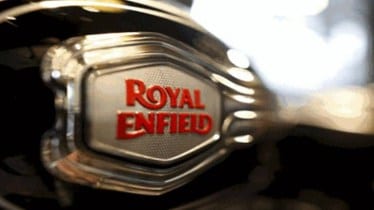Royal Enfield, which will launch an electric motorcycle in 2025, has moved beyond the prototype stage and the product is being tested right now, Siddhartha Lal, MD & CEO of Eicher Motors – the parent company of Royal Enfield – told FE on Thursday.
“The electric bike is ahead of the prototype form, and the next 24 months will be spent on refining, validation, certification, and other due processes needed to create a world-class product,” he said. “Our test riders are evaluating it. The idea is not to come out with a product quickly, but to create a product that exceeds our and customers’ expectations.”
Royal Enfield had first announced its electrification plans last month during the Q1FY24 earnings call, when it had said it has lined up a capex of Rs 1,000 crore for FY24, mostly aligned towards EVs and new product development. The capex for FY23 was Rs 650 crore.
B Govindarajan, the CEO of Royal Enfield, added that the company has roped in 11-12 new suppliers for its EV.
On the EV distribution chain, Govindarajan said the company is evaluating all options. “We have a very strong distribution channel and we may use that, or we may think of a separate sales channel for our electric bike,” he said.
Unlike players such as Tata Motors and Mahindra & Mahindra that are raising money for their EV business, Lal said Royal Enfield doesn’t need to follow that path. “We have enough money to invest in electrification and other future mobility technologies,” he said.
Royal Enfield and Eicher Motors had earlier applied for the production linked incentive (PLI) scheme, which puts its investment in the EV business at about Rs 2,000 crore.
Despite this new focus on electrification, Lal said the company will continue to make petrol engines and keep investing in internal combustion engine R&D for quite some time. “ICE will continue for a very long time in India, maybe decades. So, there is no point not to stay invested in ICE,” he said.
While Royal Enfield has a 93% market share in the 250-500 cc midsize motorcycle segment, its dominance is being challenged by Hero-backed Harley-Davidson and Bajaj-backed Triumph. Harley-Davidson X440 has received more than 25,000 bookings and Triumph Speed 400 got 10,000 bookings within 10 days of launch.
Lal said that despite the arrival of new competition, Royal Enfield will continue to lead in the midsize market. “In the last 15-odd years, we have grown from 50,000 motorcycle sales per year to a little less than a million units now. An over 90% market share in any sector isn’t sustainable. Even if it goes down to, let’s say, 89%, it won’t bother us,” he said. “Remember, we are not ceding market share to competitors – our sales will grow, and the overall segment will also grow.”
Along with the Indian market, the motorcycle-maker is now equally focusing on global sales. “Today, we sell in 61 countries. We have CKD plants in five countries (Brazil, Argentina, Colombia, Thailand and Nepal), and last year we exported more than 100,000 motorcycles,” Lal said. “In the UK and South Korea, we are the biggest player in the middleweight motorcycle segment. We have 1,057 retail outlets outside India, so there is a lot of potential for growth.”
The company has attracted a lot of new and younger buyers with the Hunter, which has clocked sales of over 200,000 units in just one year of launch. Govindarajan said that the Hunter has done fabulously well for Royal Enfield. “The average age of the Hunter buyer is 24-25 years, as compared to 27-30 years for our other models,” he said. “It has given us a new set of customers.”
For its future products Royal Enfield won’t rope in brand ambassadors, including for the new Bullet that will be launched on Friday or the new Himalayan motorcycle that will be launched later this year. “We are not glitzy in terms of having a brand ambassador; our products are our brand ambassadors,” Lal said.
